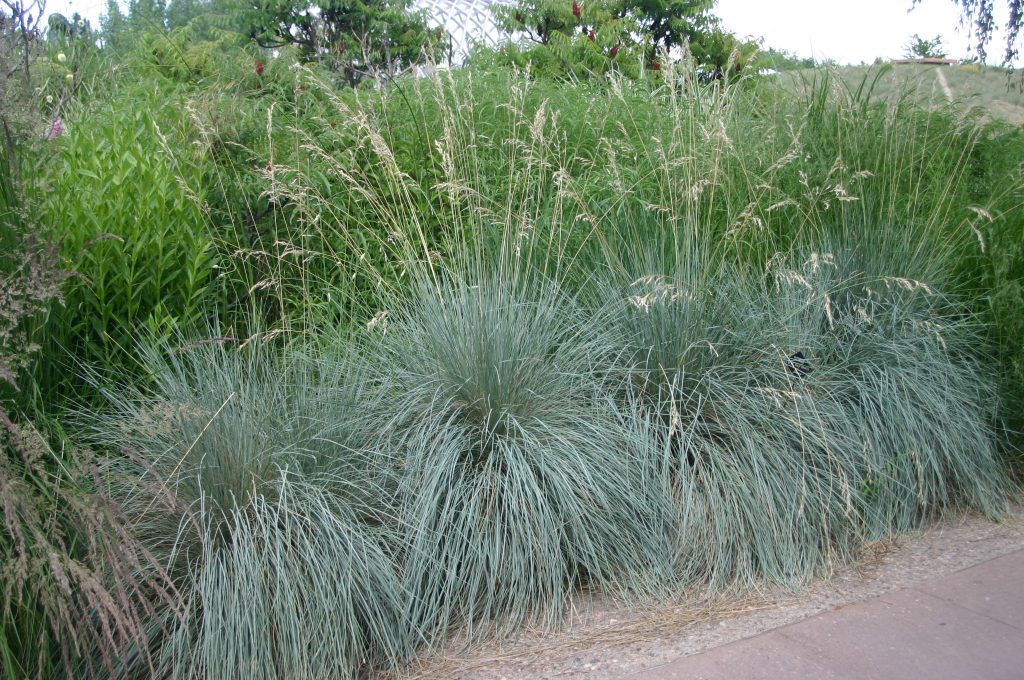
Overview of Blue Oat Grass
Blue oat grass, Helictotrichon sempervirens, is a cool season, clump-forming grass with steel-blue foliage. This is an award-winning plant for any garden. It won the Award of Garden Merit from the Royal Horticultural Society in 1993. The neat, bristly mounds make an attractive ornamental plant. Blue oat grass is similar in appearance to blue fescue (Festuca glauca) but taller and with sturdier blades.
Native to central and southwestern Europe, this perennial grass is hardy in zones 3 -8. The long, wiry leaves on arching stems are about ½ inch wide and taper to a fine point. Under optimal conditions it grows about 18 to 24 inches tall in a mound equally as wide. Graceful oat-like flowers grow vertically from the center of the plant and are much taller than the foliage. However, it rarely flowers in Wisconsin and the upper Midwest. The leaves turn light brown in autumn and persist through the winter.
Landscape Use
Blue oat grass has many landscape uses, with a silvery blue color and texture few plants have. It makes a nice addition to the perennial border, particularly as a contrast to green-leaved plants. Use it as a single accent plant in the smaller garden or rock garden, grow it in masses for a fine-textured drift, or try it in a container. Blue oat grass makes a nice row along a walkway or can be added to the front of a shrub border.
It combines well with Russian sage (Salvia yangii, formerly Perovskia atriplicifolia), Salvia x sylvestris ‘Mainacht’ (‘May Night’), blanket flower (Gaillardia), Sedum ‘Autumn Joy’ and upright ornamental grasses, such as feather reed grass (Calamagrostis). Use it to echo the blue foliage or flowers of blue spruce, blue junipers or blue-flowering perennials such as Campanula carpatica, lavender (Lavandula spp.), or blue mist spirea (Caryopteris). For a more dramatic effect, try combining it with plants with deep maroon leaves.
General Care of Blue Oat Grass
Plant blue oat grass in full sun or very light shade. Although it prefers dry, well-drained soil, it will tolerate heavy clay soils – as long as it does not remain too wet in winter. Well-drained soil is essential for winter survival. Leaves die back in Wisconsin winters; use a rake to remove the old foliage close in late winter or very early spring. This plant has no significant insect pests or diseases other than crown rot that occurs in poorly drained soils.
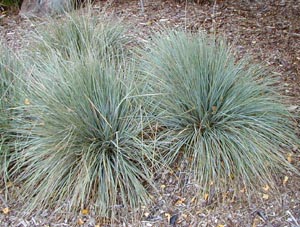
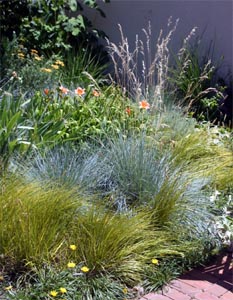
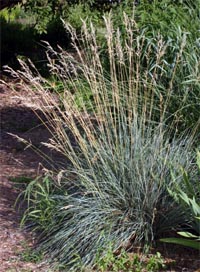
Cultivars of Blue Oat Grass
- ‘Sapphire’ has finer blades that are slightly smaller and bluer than the type.
- ‘Saphirspudel’ (‘Sapphire Fountain’) is a finely textured with steel blue color, semi-evergreen selection from Germany.
How to Propagate Blue Oat Grass
Propagate blue oat grass by division in the spring or grow from seed.
– Susan Mahr, University of Wisconsin – Madison
Last Update: Bruce Spangenberg, UW-Madison Extension, 2025

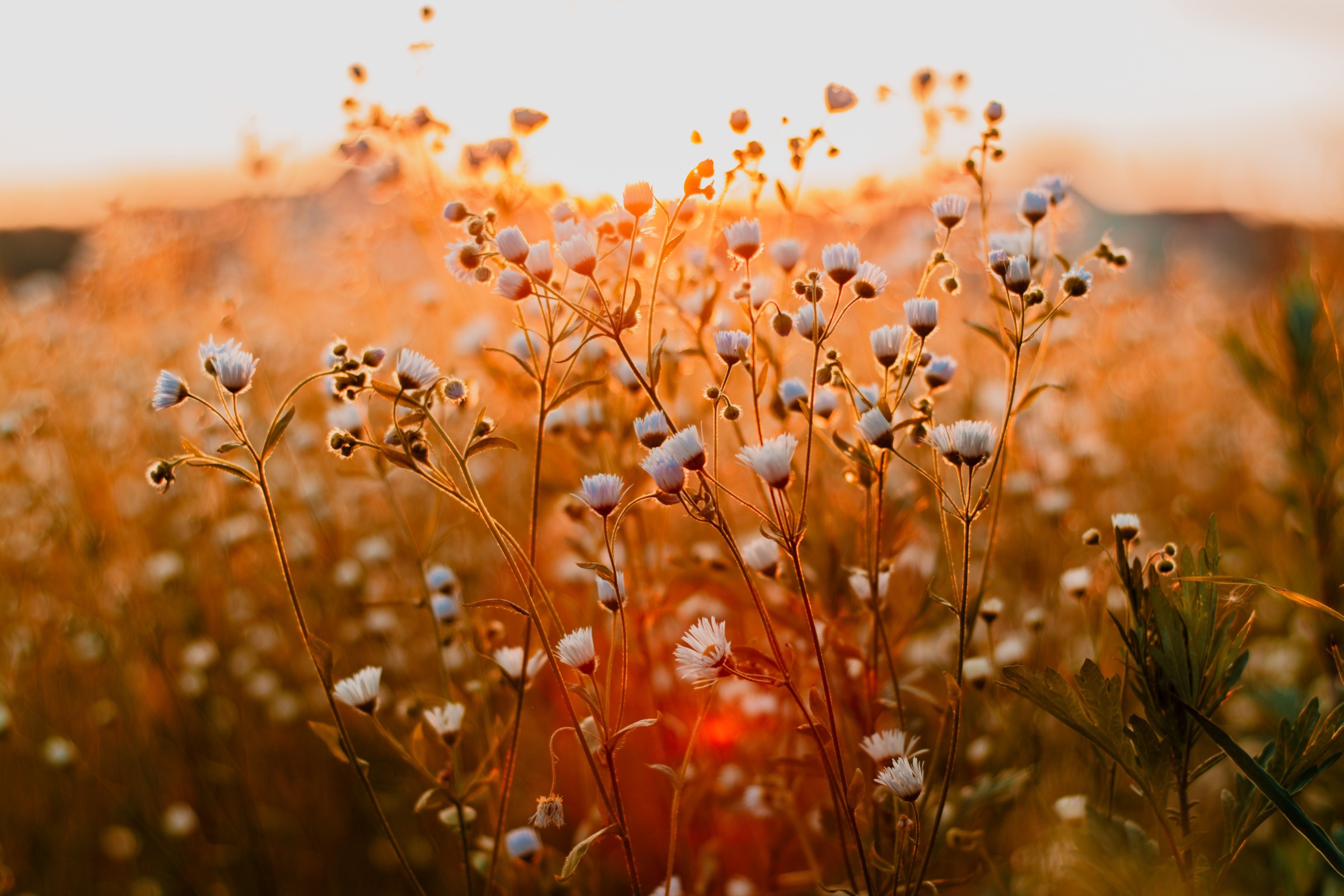
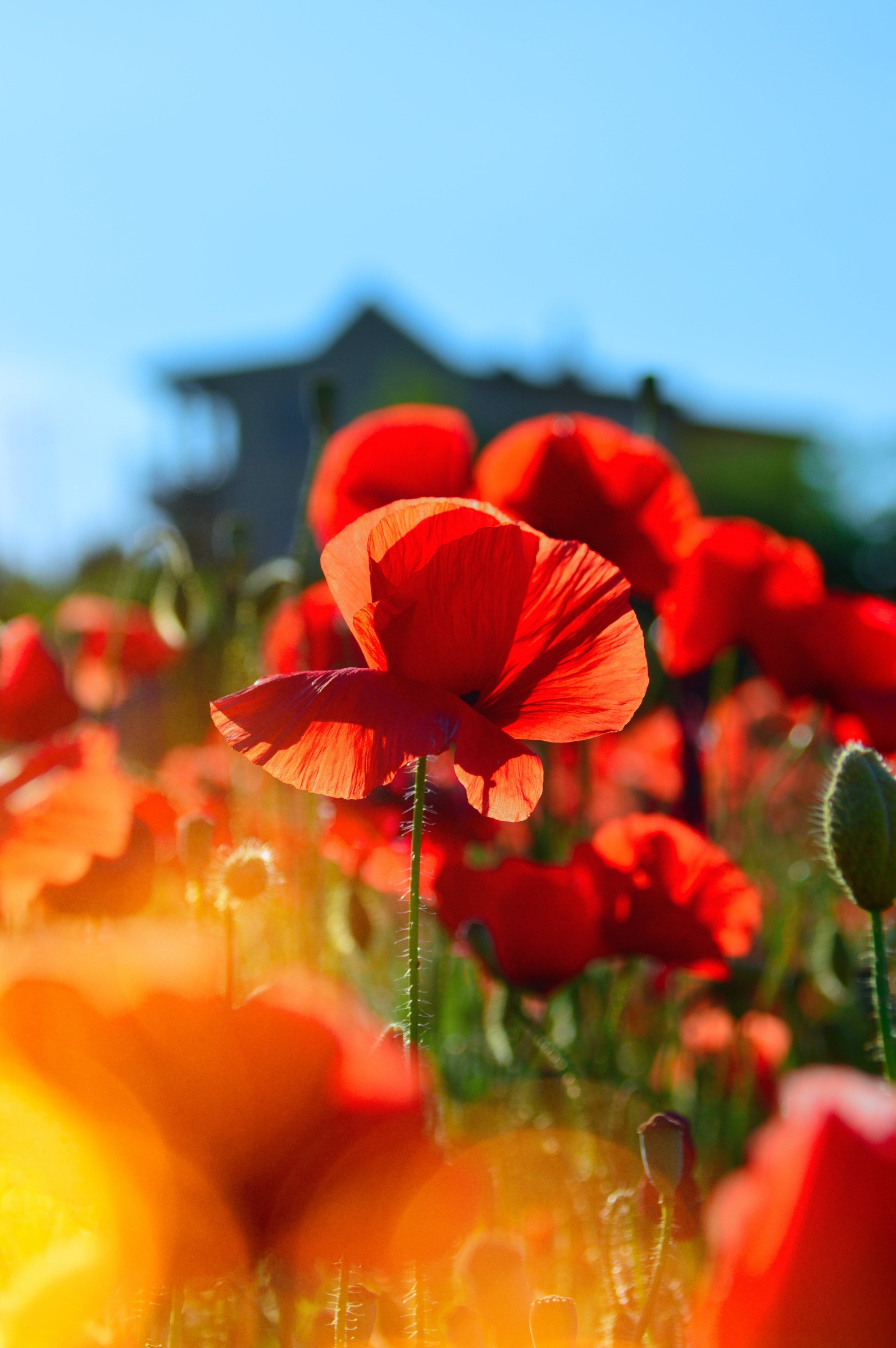
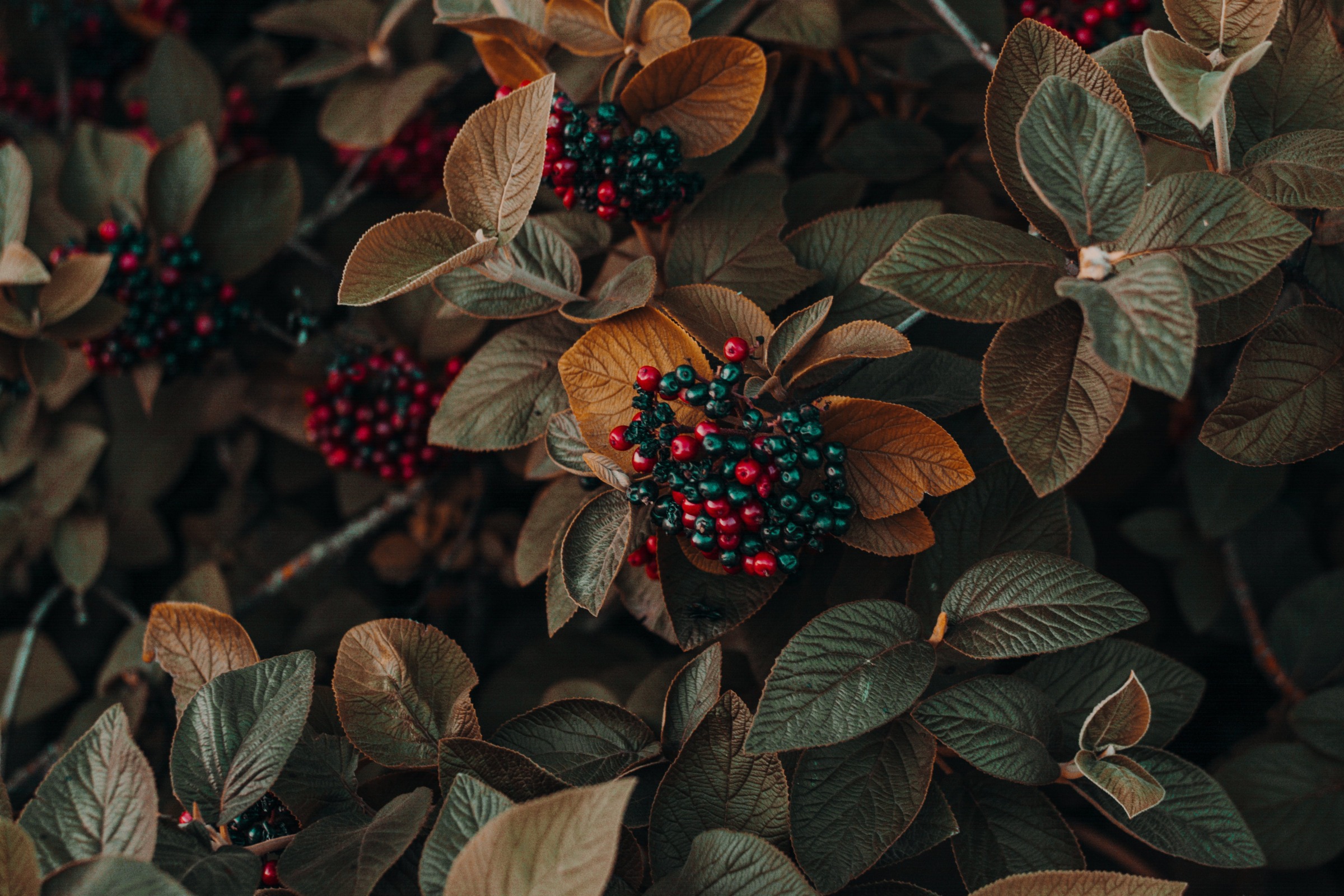
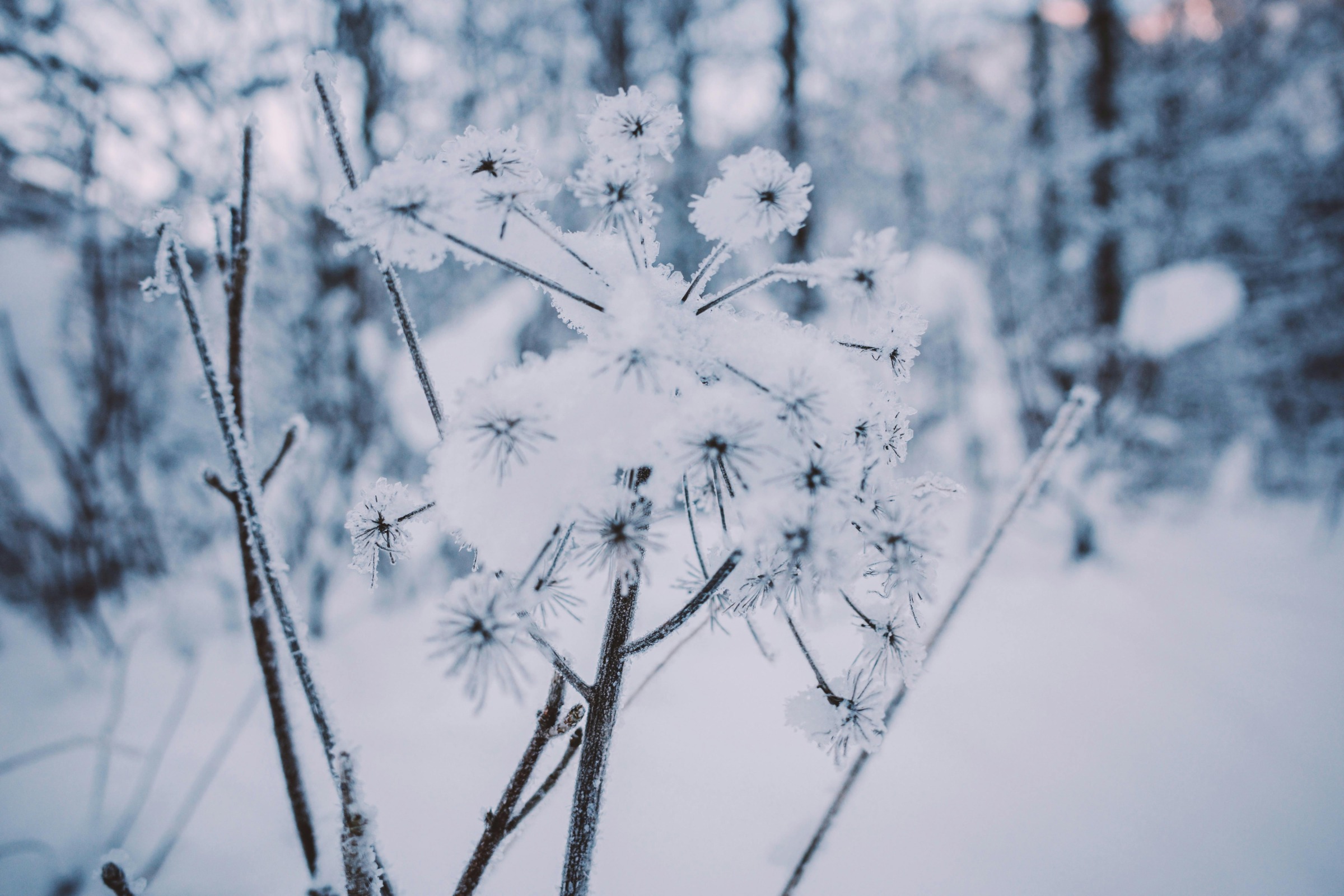
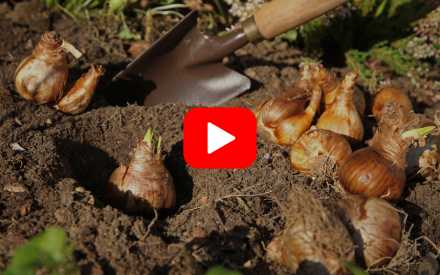 ▶︎ Watch: Fall Bulb Planting
▶︎ Watch: Fall Bulb Planting Aster, Symphyotrichum spp.
Aster, Symphyotrichum spp.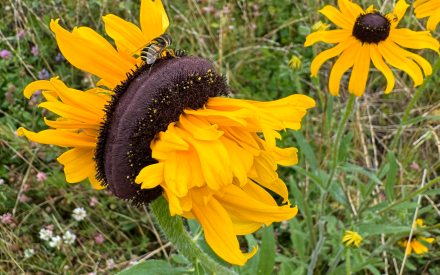 Fascinating Fasciation
Fascinating Fasciation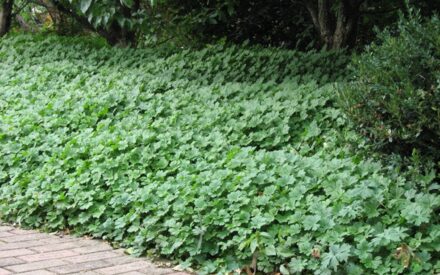 Alternatives to Lawn: Groundcovers
Alternatives to Lawn: Groundcovers


